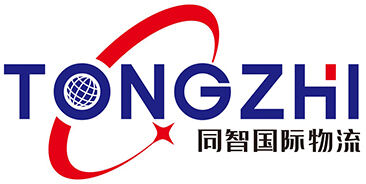 ×
×
Effective container utilization is pivotal in reducing costs and maximizing profits in logistics operations. Containers are a standardized cornerstone of global trade, ensuring efficient transport and storage solutions. By embracing load planning and container yard management, we can improve usage rates and streamline logistics processes. Load planning involves strategically arranging container cargo to maximize space and balance weight, while efficient yard management minimizes handling times and reduces delays.
Industry reports have highlighted companies realizing significant efficiency improvements through optimized container utilization. For instance, studies show that companies implementing these strategies have cut transportation costs by up to 20%, contributing significantly to their overall logistics efficiency. Such optimization not only enhances profitability but also supports environmental sustainability by reducing emissions associated with transport inefficiencies.
Predictive analytics is revolutionizing supply chain operations by offering precise demand forecasting capabilities. By leveraging historical data alongside advanced algorithms, businesses can anticipate market needs and align their inventory systems accordingly. This proactive approach mitigates stockouts and ensures optimal inventory turnover rates, crucial for maintaining customer satisfaction and reducing excess stock.
The measurable benefits of adopting predictive analytics are evident in streamlined inventory management and enhanced operational efficiency, allowing businesses to adapt swiftly to market fluctuations and seize opportunities that drive growth.
Efficient routing strategies play a critical role in reducing transit times, enhancing logistics operations for container shipping. One strategy involves utilizing multimodal transport, which leverages various modes of transportation to optimize speed and reliability. Additionally, optimizing shipping routes through advanced route planning software can reduce time in transit significantly. For instance, logistics companies adopting these strategies have reported improved delivery speeds, increasing customer satisfaction and retention as customers experience shorter waiting times. According to industry reports, companies like DHL have successfully streamlined their operations by implementing optimized routing, resulting in notable efficiency gains.
Container shipping offers myriad cost-effective solutions to businesses involved in international trade. One of the significant advantages is economies of scale, where bulk shipping in full container loads (FCL) allows lower per-unit costs. Another strategy is the consolidation of shipments, where multiple smaller packages are combined into a single container, significantly reducing expenses. Freight forwarding tactics, like strategic route adjustments and pairing cargo with compatible destinations, further minimize costs. Many businesses, such as Kuehne + Nagel, have successfully reduced costs through these methodologies, improving their global trade operations while maintaining high service levels and reliability.
AI has transformed supply chain visibility by enabling precise tracking of shipments and predicting estimated times of arrival (ETAs). Through advanced algorithms and machine learning, AI can process vast amounts of shipping data to enhance operational accuracy. This technology aligns shipment progress with customer expectations, increasingly becoming crucial for businesses aiming to improve customer satisfaction. According to tech experts, AI integration in supply chain networks has shown measurable improvements, with some logistics companies reporting up to 30% improvement in accurate ETA predictions due to AI capabilities.
Integrating IoT devices into the supply chain significantly boosts container tracking and monitoring capabilities, improving both security and efficiency. Technologies such as RFID and GPS play pivotal roles in real-time monitoring, offering precise updates on container status, location, and environmental conditions. Leading logistics firms actively leveraging IoT have reported enhanced supply chain control and reduction in unexpected delays. For instance, a logistics company leveraged IoT for improved tracking, resulting in a 25% reduction in transit uncertainties, showcasing IoT's potential in transforming supply chain monitoring practices.
The partnership between Hapag-Lloyd and HERE Technologies exemplifies strategic collaboration aimed at improving global supply chain visibility and efficiency. Together, they have integrated advanced tracking devices into over 1.5 million containers, significantly enhancing Hapag-Lloyd's ability to predict Estimated Times of Arrival (ETAs) across various transport modes. This technological synergy allows for more precise operational planning and increased customer satisfaction. According to Jason Jameson, Chief Customer Officer at HERE Technologies, this collaboration redefines supply chain visibility by providing precise ETAs that help Hapag-Lloyd remain competitive. Notably, the partnership has resulted in tangible improvements in delivery times, showcasing substantial operational effectiveness.
Strategic alliances in logistics offer numerous advantages, including shared resources, reduced costs, and enhanced efficiencies. By pooling expertise and technology, partners can achieve more than they could independently. For instance, the collaboration between logistics giants demonstrates how partnerships can lead to improved service offerings and operational performance. The ongoing trend towards strategic alliances in the logistics industry underscores their importance in adapting to evolving market demands. These collaborations not only enhance current operations but also pave the way for a future where logistics companies can leverage collective strengths to meet challenges and drive innovation. As evidenced by successful partnerships, these alliances contribute to streamlined operations and superior customer experiences, reinforcing the value of collaborative efforts in the sector.


